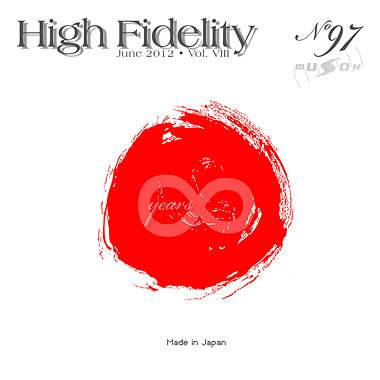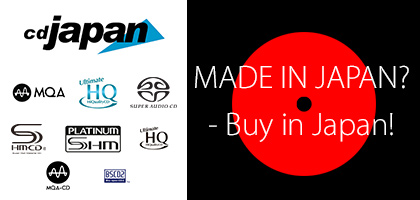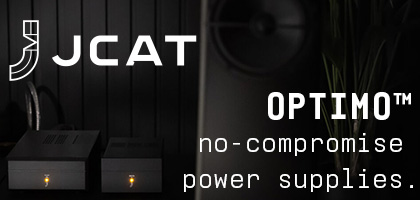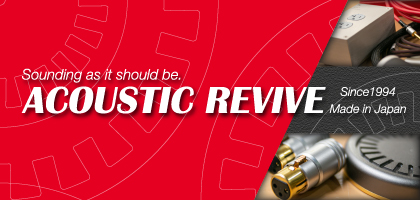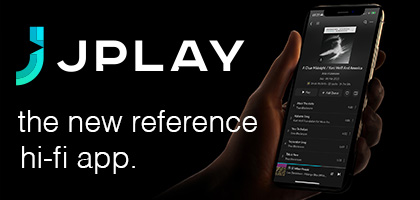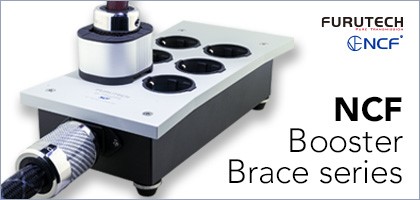First of all, a true audiophile never listens. He (or she) auditions.
Bartek Chaciński, Wyż niż
AUDITIONING – A SHORT INTRODUCTION TO ATYPICAL BEHAVIOR
(or why listening is not always auditioning and what it means)
My editorial to the April issue of “High Fidelity” titled AUDIOPHILE – A SHORT INTRODUCTION TO THE MAN (a few arguments for sense in the audiophile business) turned out to be useful. For many of the HF readers it was apparently the first time to look at audiophilism as a kind of art but also an activity well-grounded in scientific research, although not quite following the modern notions of how it should be carried out. As all branches and niches gathering “perfectionists”, this one also seems to anticipate the trends that later become “mainstream” and paves the way for the paradigm change. Anyway, I hope that the editorial has given many of you an impulse to stop feeling ashamed of being an audiophile. There’s nothing to be ashamed of.
I wrote about us, audiophiles, in general terms, trying to present a possibly broad picture of who we are and what is our subject matter. The editorial was meant to be a guide helping to introduce audiophilism to our families, friends, etc. In my following articles I would like to expand some of the issues that I touched upon. The first subject is the question of “auditioning”. I will try to describe what “auditioning” is (or rather, what it should be), how it is different from “listening” and will mention some complications involved. I will present a number of questions and will try to find possible answers. I may not always succeed but I will do my best.

What is “auditioning”?
The meaning of the word as used by audiophiles is rather new. The word “audition” originally describes “the action of hearing or listening” or “a trial hearing or performance of an actor, singer, etc., seeking employment” (Oxford English Dictionary, Second Edition, 1989). The Merriam-Webster dictionary additionally defines the noun as “the act of hearing; especially: a critical hearing .”
As we can see, the common idea seems to be that of a trial or a critical hearing of somebody or something.
In my previous editorial I stated that auditioning is a time devoted to examining the influence of audio equipment on sound. We can expand that statement and say that auditioning is a critical listening to recordings or audio equipment. This kind of dualism, i.e. evaluative listening is – quite rightly – imbedded in the lexical definition of auditioning as stated above.
On the one hand, it is therefore an act of critical listening to recorded music, which is most often an album (understood not as the physical medium but rather as a kind of artistic unit). Yet, on the other hand, it is examining of various audio components and accessories and their influence on sound. It is a task of sitting in front of our speakers or with our headphones on and continuous assessing, evaluating everything that we hear; disproving musical message, its form and content (in audio they are two attributes of the same phenomenon which is the MUSICAL MESSAGE), and finally verbalizing our perception, impressions. Auditioning is not a game or entertainment, at least not in its pure form, in the sense of thoughtless stimulation of our pleasure centers, but rather a creative task, constructive and – preferably – conclusive, that leads to and arrives at some conclusions. It is an example of “examining by inspection”, basic scientific research. It combines pleasure with something more – work (including work on oneself).
And it is in this formulation that auditioning would be close to what Karol Szymanowski meant when he said in the 1960s that public space should be cleared of the ever-present music, because listening to music makes sense only when it is given total attention, with albums played from the beginning to the end. Could he be an audiophile?

Comparing – but to what?
While auditioning anything, be it a recording or an audio component, the basic question we should ask ourselves is what is our benchmark. If we assume that the goal of auditioning is to evaluate a recording or a piece of audio gear (or a whole audio system), such evaluation needs some point of reference, a benchmark. That is, if the said assessment is to be valid and have any cognitive value.
And here the trouble begins. In audio there is no consensus concerning what the point of reference is. Startling, isn’t it? Now, if we were to take the simplest explanation, the point of reference should be a live event, a live music concert, be it classical, jazz, or rock. It would seem that we try to reproduce (it is a RE-production after all) at home an event that happened “live”; to recreate the sound of musical instruments, vocals, the venue acoustics, etc. And, actually, there is much truth to it all. Yet, when we look closer, it turns out to be unfeasible stipulation; an ideal that we can strive to achieve but will never, I am quite sure of that, be able to meet. The thing is that a live event and its reproduction at home are two different things, in some way belonging to the same group but yet not identical (not even close).
Recording vs. reality
In order to explain it better, I need to refer to another media, to film. To simplify, I will concentrate on one particular area, film documentary. The basic goal of a documentary (and also photography) is to faithfully render the “reality”, enabling many people, in various places and times, to experience the same as the cameraman (or the photographer) did. Such veristic approach was pursued by many film artists and proved to lead nowhere. It turned out that – unlike the structuralists anticipated – it is not possible to separate the observing subject from the observed object; in other words, the observer affects the observed reality. Secondly, it is not possible to make a film that shows the point of view of all the participants simultaneously, maintaining the same “import” of each one’s perspective. The film-maker needs to choose the location, the time, the main concept, etc. Later he needs to pick up particular scenes and to edit his documentary. And if he is a really good documentarist, he needs to tell a story, to communicate a message, something that will become an “added value”. All that means that documentary, despite its name, is a sum of all these actions and people. It is a collection of choices and there is no way that any documentary can reflect reality 1 to 1. What it can do is to tell a TRUTH about the world. Therefore, each documentary is a CREATION and has its author, its creator.

A recording engineer faces the same challenges as he is also a kind of “documentarist”. But only “a kind of”. I often heard self-assured claims that the truly purist, successful recording is the one “documenting” the musical event, without any manipulation on the recorded material. Hearing that I knew well that the claims were made by people who hadn’t had anything in common with recordings and if they did, they were living in some kind of delusion, in a glass house, and could not come to terms with simple facts.
The relation between the recording and the live event is the same as in the documentary: the recording is an attempt to TRANSLATE what happens in “reality” into the language of recording; an attempt to arrive at some truth. And, as any “translation”, it depends on the source material (the real sound) as well as on the “translator” (the recording engineer). The recording engineer faces a variety of choices, with one that is fundamental: microphone technique. I refer to it as an example because it is a fundamental choice and it well shows the complicated character of the recording process and the relation between the recorded material and the live event.
/p>

Each person who did any recording is aware of the fact that the first decision is the choice of microphone technique. Is it a single, stereo pair of microphones or a multi-microphone “sphere” (as in e.g. ambisonic), or maybe many microphones (multi mono)? And even if, puristically, two microphones, is it better to go M-S or X-Y or rather A-B? Or maybe something else? And there are other problems. For example: as it is known, a microphone is not a linear component and the way it “hears” sounds depends on many variables, such as the distance from the source of sound, the angle of incidence of the sonic wave on the microphone membrane, the type of microphone, its make, and even its model.
This recording dichotomy, that is attempting to “document” the musical event while realizing at the same time that it is virtually impossible, is convincingly shown by Krzysztof Sztekmiler, who in the introduction to the chapter titled Recording methods from his book Fundamentals of sound mixing and recording: a handbook for acousticians writes as follows:
“There are several most often used methods of music recording; each one of them emphasizes different sound characteristics and venue acoustics, requiring accordingly a certain number and type of microphones. The choice is up to the recording engineer and has to be made before the actual recording.”
Krzysztof Sztekmiler, Podstawy nagłośnienia i realizacji nagrań. Podręcznik dla akustyków, Warszawa 2003, pp. 130-131.
And if, we need to add, there is a CHOICE, there can be no DOCUMENTARY. It is interesting that recording engineers were long hoping (as some of them still do) that some time, in an undefined future, they will be able to get round that problem. A good example of this optimistic approach is the following quote from Aleksander Witort, in one of the most important Polish handbooks on audio equipment:
“It needs to be emphasized that there are various, often contradictory, opinions on the advantages and disadvantages of particular microphone systems. It will most likely take a long time before the expertise gathered in different countries by electro-acousticians and recording engineers is normalized and it effects the standardization of opinions and applied techniques.”
Aleksander Witort, Stereofonia dla wszystkich, Warszawa 1973, p. 47.

Taking into account that it has been over two hundred years since the first attempted sound registration, using Thomas Young’s tuning fork in 1807, and well over a hundred years since the invention of microphone (end of 19th century), and we still cannot reproduce a live musical event at home, I wouldn’t be such optimist.
As can be seen, the first obstacle to successfully bringing a musical concert to our home is the recording of the musical material. We have not yet reached the home audio system and it is obvious that what we can hear at home IS NOT the same that took place in a concert hall or a recording studio.
Paradoxically, the inability to document the “live” event doesn’t need to be a drawback. My experience as well as that of many music lovers, audiophiles, sound engineers, musicians, etc., shows that a recording can be better than a live event, or rather more accurately, than our perception of the live event. Recording techniques bring out more from a concert than we can hear sitting in the concert hall.
Marshall Neck in the latest issue of the American internet magazine “Positive Feedback Online” (Issue 60, March/April 2012) asks in the title of his article, Can Recordings be Better than Live? (the whole story can be read HERE) and answers it with a resounding YES! Comparing a concert that he went to with its recording he does not hesitate to choose the latter. He sums up his experience in the following words:
“Given that, and the impossibility of recreating the live event, don’t we owe it to ourselves to optimize playback with any tools at our disposal?”
Amen, brother, amen!
These were my exact thoughts when I listened to concerts during the Misteria Paschalia festival that took place in the Cracow Philharmonic of Karol Szymanowski. The problem with concerts in this particular venue is that the Philharmonic in my beloved city has acoustics resembling that of a large barn. Musical instruments, vocals sound bad or very bad. For example, organ concerts are a regular slaughterhouse. Much better are small ensembles, playing with lower sound volume, such as during Misteria Paschalia concerts. Nevertheless, it is still only an approximation of the true sound, with many provisions.
Playing any album with Baroque music will much better show plucked string instruments, normally very difficult to hear, will show better space, balance between the instruments, etc. In order to make a direct comparison to what I heard in the Philharmonic, I bought two albums with material recorded during Misteria Paschalia 2006 and 2007 by the Polish Radio, which also recorded and broadcasted this year’s concerts. Both CDs feature Europa Galante, the band that opened this year’s festival, which I witnessed. The recordings are not outstanding; the poor Philharmonic acoustics is clearly audible as is the added delay, but even as such they are more articulate, clearer, more coherent than what I could hear live. .
|
There is not a chance that we might hear so well during the concert, event taking the front seats! (Gian Francesco De Majo, Gesu sotto il peso Della Croce, Europa Galante, Fabio Biondi, Misteria Paschalia Collection, Krakowskie Biuro Festiwalowe, CD [2010]; Allesandro Scarlatti, La Santissima Annunziata, Europa Galante, Fabio Biondi, Misteria Paschalia Collection, Krakowskie Biuro Festiwalowe, CD [2010]). This is true about most musical events, not only in Krakow but generally in any concert hall
Why, then, I keep coming, why do I go even to the Cracow Opera, despite the fact that after seven years of work with its team as an acoustician, during rehearsals and spectacles in the Theatre of Juliusz Slowacki, I promised myself never ever again to go to opera in Poland, and despite total misunderstanding in the form of its new building, I used to come to the opera quite regularly during last months? Why do I come to the Cracow Philharmonic? Why do I go from time to time to a large rock concert on a stadium? The answer is simple: the live event is about emotions, it involves other senses, sight, smells, interaction with other listeners, etc.
Anticipating my conclusions, a good audio system can be characterized in the same way – not by how faithfully it conveys the recorded event, as they are two different worlds, two separate “narratives”, but rather by its ability to evoke an emotional reaction in the listener.
Here’s the summary of this section: auditioning is critical listening, with an added component of evaluation. To make sense, it needs some context, a point of reference for sound, against which we can conduct assessment. One of such benchmarks is a live sound. However, I hope I have shown that it is rather distant from what we can achieve at home. The first obstacle is the recording itself, detached from reality. Instead, it creates a new reality, a new quality that has rather symbolic relation to what took place in front of microphones; it is not a “documentary” for it is a collection of choices.
Nevertheless, the live sound of instruments and vocals can be, in limited capacity, a reference point. More precisely, one of two such points, not the most important one and rather being some kind of orientation point, not the ultimate goal. The problem is that there is no reference point for electronic music, rock, and pop, which all depend on the PA system of a particular band, acoustician, etc. – it is often purely a recording studio event, without any relation to “real” sounds. There is no such reference here.

So what’s with reference?
What is then the reference for the sound of an audio system? The answer is rather awkward and controversial, but hey – we said “A” we need to say “B”: the ultimate point of reference is (in my opinion; it’s not a divine truth) the sound of other audio systems. There, I said it.
When we downplay the importance of the live sound, for – let me repeat – a recording is not identical to a concert, it is only another audio system, another audio component, implicitly, a better one, that will allow us to properly evaluate the system or the component we audition. And it is this combining of the sound known from a live concert with the sound of a better audio system that lets us assess the quality of the product, of the component under our scrutiny.

Auditions – what are they for? Why not measurements?
The above approach effectively leads to the position where the most important evaluating factor is the human person, acting on his or her own personal experience. Why then shouldn’t we rather instead rely on trusted measuring techniques – thereby eliminating subjective (according to the so-called “objectivists”) impressions and evaluations.
A short answer: relying only on measurements, without any auditioning, disgraced itself long ago, in the 1970s. I wrote about it before but let me repeat it here: during the late 1960s and 1970s the leading audio magazines, including “Hi-Fi News & Record Review” test reviewed amplifiers, loudspeakers, etc., relying on sheer technical measurements, without any auditioning. Their conclusion was: if the amplifiers measure similarly, they sound similarly. Or even, a particular amplifier is no different from another amplifier. Rubbish, isn’t it? You don’t need to be a trained, experienced listener to dispute such a claim, even after a short audition.
The lack of correlation between standard measurements and auditioning impressions has been aptly described by Robert Harley, the chief editor for “The Absolute Sound”, in his editorial to the latest issue of TAS:
“The case of SET exemplifies the fact that certain sonic aspects of the amplifier cannot be quantified by traditional measurements. Where in the measurement results do we find information about the amplifier’s tangible musical expression – the sensation that the musician is present with us in our listening room, playing music then and there? Which measurement can tell us that the amplifier reproduces the timbre of vocals with such realism that our knees go soft? Which graph will show us its musicality? How is it possible that such “bad” amplifier sounds so great?”
Robert Harley, The Single-Ended Triode Paradox, „The Absolute Sound”, Issue 223, May/June 2012, s. 12.
It also well sums up my personal experience. I know certain audio products which “measure” great and yet I wouldn’t even put them in my toilet, unless maybe as a vomit generator. On the other hand, many components that “measure” very poorly sound simply amazing. It is not a golden rule as my Soulution 710 amplifier not only measures extraordinarily but also sounds fantastic, but it is rather an exception. My Ayon Audio Polaris III preamplifier sounds better than it measures.
Classic measurements are static and do not show how all the results constantly change in time. Moreover, apparently we do not measure what we should, or to be more precise, we still miss some key measurements to get the full picture. And we lack knowledge on how to correlate and interpret them. That is why the vast majority of audiophiles and audio magazines choose auditions to be the key evaluating factor. Some magazines conduct very specialized measurements, treating them as an auxiliary factor, allowing to reach deeper. However, they do not contribute to the final verdict. In “Stereophile” we can often see a paradoxical situation – measurements show something different than auditioning. The choice is then simple – we go by what we hear.

How to listen in order to audition
I hope that you have stayed with me so far. You will know by now that the point of reference during audio auditions is first of all audio equipment better than the auditioned component, combined to some extent with live sound. You also know that measurements do not show how the given component “sounds”. The common consensus in audio is that the only available, trusted “measuring|” of a component is human ear and it is the human person who has to make assessment.
For it to be successful, we need to hold an “audition”. What does the audition look like? There are many possible methodologies and experiments; I will concentrate on my own methodology that I developed during my years of experience as an audio and recording engineer and audio journalist.
Auditioning in my case means comparing a given component against my reference component. I have my own reference system into which I introduce the tested component. It is desirable that the reference product be several times more expensive (better) from the tested one – in measurements we say that the measuring instrument should be an order of magnitude better than the measured component. The rule is valid here as well. The point is to hear the “naked” component, not the distortions introduced by other components. Such comparison has the AB character, with both A and B known. I repeat this in my every test review because it is key to its understanding. Long, long time ago I gave up on another methodology, favored in scientific communities, the so-called ABX, or double blind test. In this test we have the components A and B. We compare them by playing A, then B, then one of them – the X. We carry dozens such comparisons in a row, using very short music samples. The next step is to work out the statistical data, i.e. to count how many times the listener rightly chose what was the X and on that basis we formulate the conclusion if there is a difference between A and B. In these tests there is no attempt to describe the changes between the two products.

The credibility of the ABX tests is the bone of contention between the so-called “objectivists” (ABX) and the “subjectivists” (AB with known A and B). To become acquainted with both methodologies it is worth reading one of many articles on this subject, available mostly in English. As a good introduction I would recommend a very long, quite old (from 1985) but still valid, article The Highs & Lows of Double-Blind Testing by Larry Archibald, J. Gordon Holt i C.J. Huss, with collaboration from John Atkinson, available on the „Stereophile” website HERE. I will only add here my personal opinion that the ABX simply doesn’t work. Firstly, what we really test is the listener, not the listened product; secondly, only short music samples are employed whereas music is a time based event; thirdly, tests conducted by AES show that it is a dead end – test participants are not able to distinguish between mp3 and CD files and hence conclude that there is no difference between the two. Feel free to conduct a similar test and I am fully convinced that after a dozen seconds you will pick the CD file as the better sounding.
Well then – during my auditions I listen to components A and B in my system using 2 minutes long music samples. Sometimes I do ABA comparisons. By that I mean that first I listen to my reference system for about an hour, to “inscribe” its sound into my subconsciousness. Then I play a track that I know well for 2 minutes, switch to the tested component and listen again to the same track. Next, I switch back to my reference component and listen to another track for 2 minutes. And so on and so forth, for 2-4 hours, using a dozen CDs. I repeat all that over and over for a few days. Sometimes shorter, sometimes longer. At the end I listen through a few whole albums on the tested component, to see how it fares during a longer audition.
The described procedure allows me to build some kind of sound model of the tested component, to pay notice to how it is different from my reference system and, in a longer perspective, from what can be called “the absolute sound” (pun intended). What is most important for me in such audition is whether I could live with that kind of sound, whether I like it. For after describing the component there is time for its evaluation (they are two different things). Evaluation is based on interpreting the component description, taking into account its cost, finish, ergonomics, etc. The final evaluation is always subjective, whereas the description should strive to be maximally objective. In the words of Ken Kessler, “Hi-Fi News & Record Reviews” editor, in his interview for “High Fidelity”:
“If one can presume that the readers are seasoned audiophiles, what they need to do is recognise the various reviewers’ preferences and prejudices. That is the only way they can appreciate the remarks in any sort of context. I, for example, am not the guy to read for extreme bass – I’m more concerned with the midband. Others are obsessed with imaging, etc.”
“High Fidelity”, No. 96, April 2012; the whole interview HERE.

Music = emotions
And so we arrive at the most important conclusion that took me years of my work in audio. I wish it had happened earlier, as I could have “absorbed” more music, but better late than never. My conclusion: what is most important in music is the emotions it conveys. In case of live music it is obvious – this is exactly why I continue coming to music concerts and to the opera in Krakow. The emotions let me get over poor artistic quality (opera) or poor venue acoustics (philharmonic).
The same exact principle operates when we listen to music at home. Auditioning in such conditions, auditioning the recording will never equate taking part in a live music event. They are two different, parallel universes. Nevertheless, in many cases our home universe may be more satisfying!
However, in order to achieve that, our audio system needs to be able to convey emotions embodied in music. For that to be possible it needs to be sonically balanced; it cannot “interfere” with our listening. And it has to meet our expectations.
This I think is what we should expect from audio components we purchase – on the one hand they should get us closer to the performer, within a certain specific perspective of the given recording, while on the other hand they should meet our expectations concerning their sound. These expectations evolve in time. They evolve because of research, which is based on auditions. Thus – auditioning is the basis to reach the truth. I knew it would end up philosophically…
Wojciech Pacuła
Editor in Chief
|
 Contents
Contents

